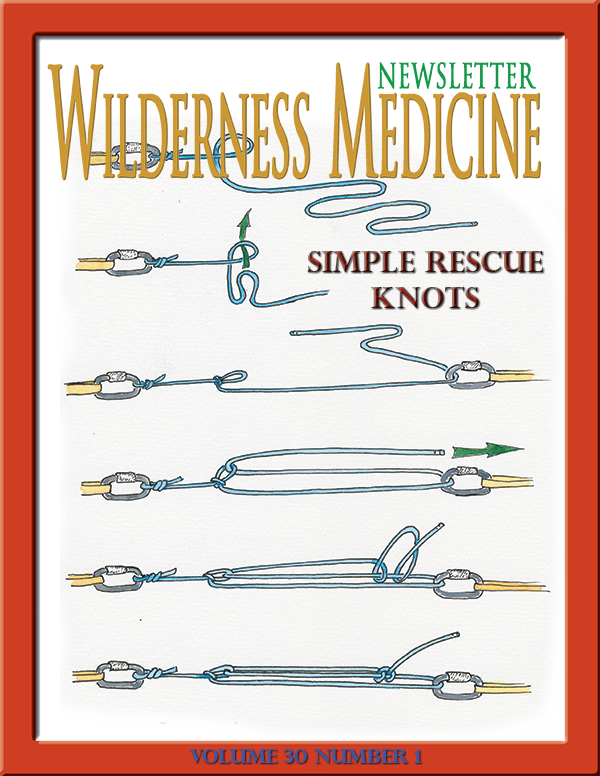Simple Rescue Knots

ISSN: 1059-6518
By Paul MacMillan, EMT
Illustrations by T.B.R. Walsh
If you do any research on knots you will find that thousands of knots have been discovered over the years. Many people in different occupations and the trades have favorite knots they use everyday on the job. For example sailors use certain types of knots compared to a weaver or someone who is doing search and rescue work.
If you are the average person you do not use different types of knots all the time. Knot tying is a perishable skill. In other words “if you do not use it you lose it.” On occasions you might need to tie something down or secure something using rope or webbing.
As an average person who does not tie a lot of knots it is important to learn a few basic knots that are easy to remember in case of an emergency. If you learn these few basic knots and you pull out a length of rope from time to time to practice them you will have this skill to use when you need it most.
Basic Rope Information
Remember every rope has a “breaking strength,” which means you put enough tension on the rope it will eventually break. In boating safety they generally consider a safe working load of a rope to be one-fifth of the ropes breaking strength. It is important to note that knots and the age of the rope tend to lower the strength of the rope. Most ropes that you buy in a hardware store have a safe working load of 300 pounds or less.
For example you need to lift injured man using ropes. The man weighs approximately 200 lbs. You have to tie a knot in the rope, and the strength of the knot is rated at 60%. Using this knot it has reduced you safe working load from 300 pounds down to 180 pounds. Now the rope that we are using is now beyond the safe working load to lift this 200 lb. man to safety.
There is very little research out there that clearly defines the strength of different knots. Because there is so little information on knot strength we are going to rely on two professions that use ropes and knot in life and death situations. Emergency services rescue operations and rock climbing. These professions provide us with simple knots that can be used in almost any type of situation.
Basic Terminology for Tying Knots
